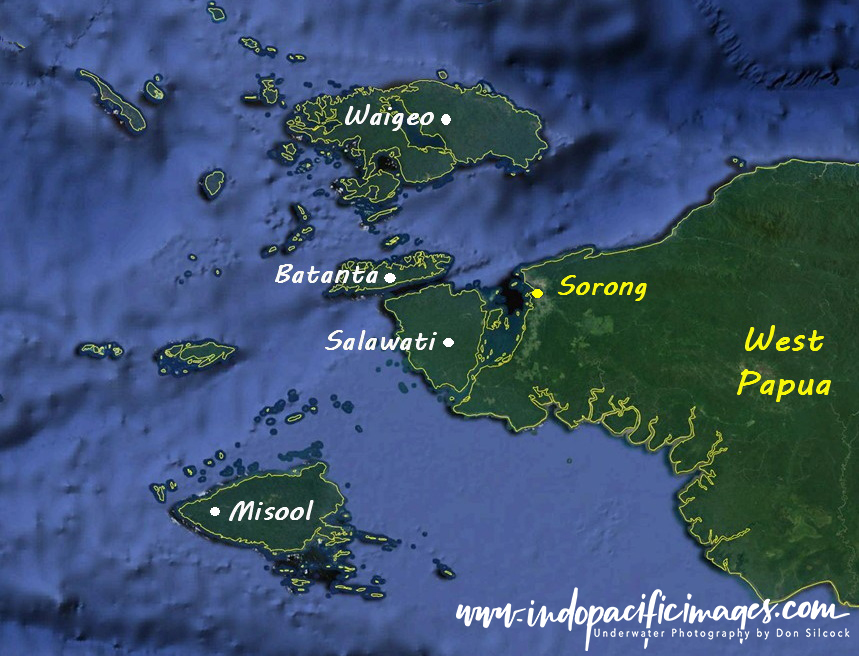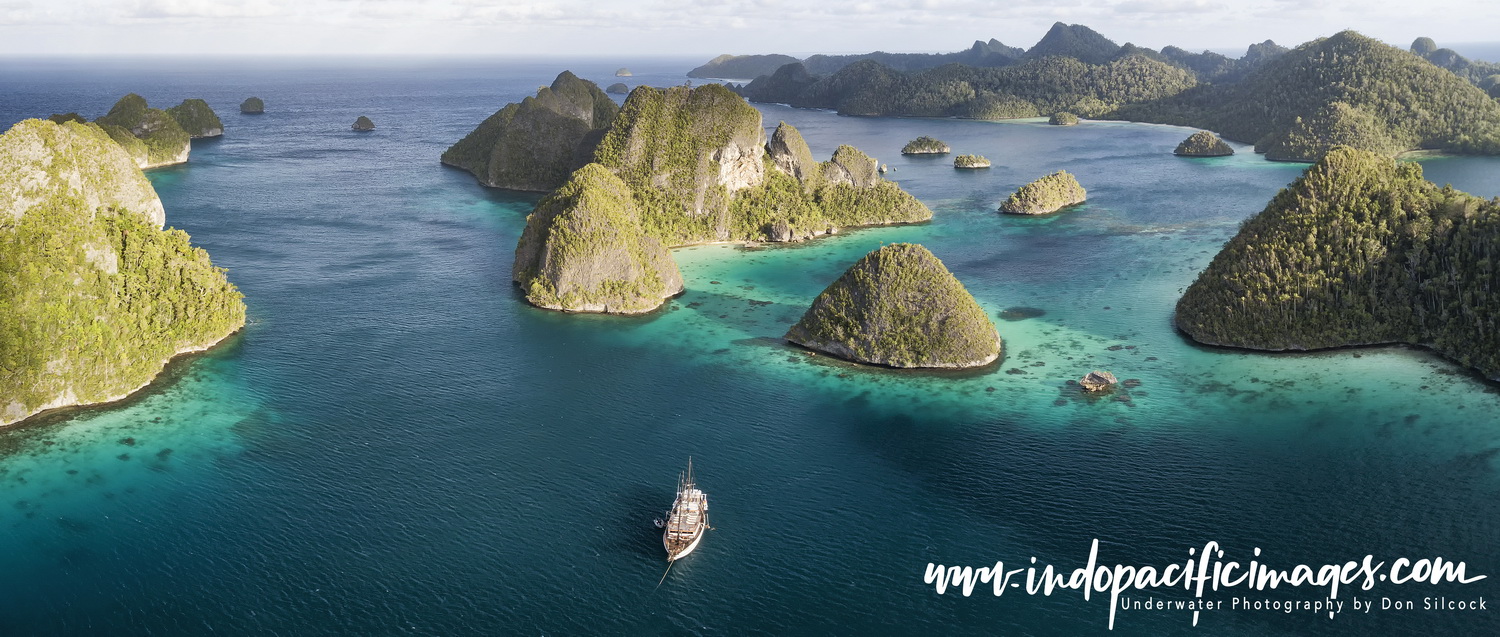
Understanding Raja Ampat… In Bahasa Indonesia, Raja means King while Ampat is four. And those Four Kings are the large islands of Salawati, Batanta, Waigeo and Misool, located on the western tip of the Bird’s Head Seascape in Indonesia’s West Papua province.
It is said that the name Raja Ampat derives from the local folklore story of a woman who finds seven eggs. Four of which hatched and the hatchlings grew to become the kings of those four islands. With the other three eggs becoming a ghost, a woman, and a stone…
Folklore aside, Raja Ampat is a stunningly beautiful archipelago. Made up of over 1,500 small islands, with a total area of some 46,000 km² – which is about the same size as Taiwan. While it covers a large overall area, less than 20% of that is dry land and the rest is water.
And it is the flow of that water through those many islands that makes Raja Ampat such an amazing location for scuba divers. Rich with nutrients swept up from the deep basins to the north, those waters almost force-feed the reef systems that bloom there.

Understanding Raja Ampat – A Bit of History…
History shows that it was once a part of Tidore Kingdom, an influential kingdom from Maluku. Yet, after the Dutch invaded Maluku, the Netherlands claimed it shortly. The people of Raja Ampat live in small settlements that are spread around the area. Although traditional culture still strongly exists, they are very welcoming to visitors. Their religion is dominantly Christian and almost every village has a small church.
The main occupation for people around this area has been fishing, since the sea dominates the area. The lifestyle in the villages of Raja Ampat is simple and many of the inhabitants are children. Therefore, it is so important to us to improve the livelihood of local communities. Empower them in our journey of conservation and sustainable tourism is equally significant. We invest in a sustainable, long-term relationship with our neighboring village Yenwaupnor and other surrounding villages of Raja Ampat.
The majority of our employees come from the Raja Ampat area. We train them in various roles, such as dive guides, captains, cooks, carpenters, electricians, wood carvers and boat builders. Further, our Sunday school provides children an interesting environment to learn English, math, geography and conservation. We conduct field trips to clean up beaches and compare healthy reefs with unhealthy reefs. Further snorkel sessions with sharks and mantas provide a great opportunity for these kids. It helps them to understand the value of their home, so they can protect it for the coming generations.
Raja Ampat Biodiversity
Raja Ampat’s Biodiversity is legendary but not unexplainable. The region is located right at the center of the so-called Coral Triangle. It is a roughly triangular area of the tropical marine waters. The area includes parts of Indonesia, Malaysia, Papua New Guinea, Philippines, Solomon Islands and Timor-Leste. It contains at least 500 species of reef-building corals.
The Coral Triangle is recognized as the worldwide epicenter of marine biodiversity. Not only for corals and fish, but many other marine organisms as well and therefore a global priority for conservation. The region covers only a very small portion of the planet’s oceanic area. Yet, it has the majority of all known coral species in the world. It is habitat for roughly half of all Indo-Pacific reef fishes and almost half of the world’s reef fishes. Therefore, it encompasses the highest diversity of coral reef fishes in the world. More than 3000 species of fish live in the Coral Triangle. It also provides habitat to six out of the world’s seven marine turtle species.
Raja Ampat’s biodiversity in numbers: More than 1,300 species of coral reef fish. Five species of rare and endangered sea turtles including the hawksbill sea turtle. 600 species of hard coral within the Bird’s Head Seascape—75% of the total for the entire world. 13 marine mammal species including the dugong. 700 species of mollusk—including 7 giant clam species. 57 species of mantis shrimp within the Bird’s Head Seascape.
Above the Water
The Raja Ampat islands are mostly made of limestone. Many of the smaller islands have rough shapes looking like little mushrooms during low tide. That is because sea water steadily hollows out the lower parts. Despite the rough structure, tropical trees have found nooks and crannies to place their roots. So they provide a habitat for various bird species even on tiny islands.
On the larger islands of Raja Ampat Indonesia we find lush rainforests with majestic trees. Also many other tropical plants, for example wild orchids. Some islands have waterfalls and small mountain ridges. In these forests we can discover further tropical bird species as well as bats and various butterflies. The jungles of Raja Ampat are also home of the endemic Birds of Paradise famous for their amazing mating ceremonies. We can observe the two species Red Bird of Paradise and Wilson’s Bird of Paradise on dedicated bird watching hikes.
The British explorer and biologist Alfred Russel Wallace visited Raja Ampat in the 19th century already. Wallace is known for independently conceiving the theory of evolution through natural selection. He was fascinated by Raja Ampat’s beauty (above the water, as diving hadn’t been invented yet). With his fieldwork in Raja Ampat and other areas of Indonesia Wallace identified the faunal divide, the Wallace Line. It separates the Indonesian archipelago into two distinct parts. Firstly, the western portion in which the animals are largely of Asian origin. And secondly the eastern portion where the fauna reflects Australasia.
Climate and Seasons
Sea and weather temperatures are stable all year round in the Raja Ampat islands. This makes it very easy to plan your journey. The sea temperature is between 28°C and 29°C all year. Historical weather temperature averages are 30°C during the day and 24°C during the evening. Raja Ampat Indonesia has two seasons and the direction of the wind dominates these rather than the rain. Like many tropical places, Raja Ampat is rainy all year round with tropical showers and sunshine within the same day.
